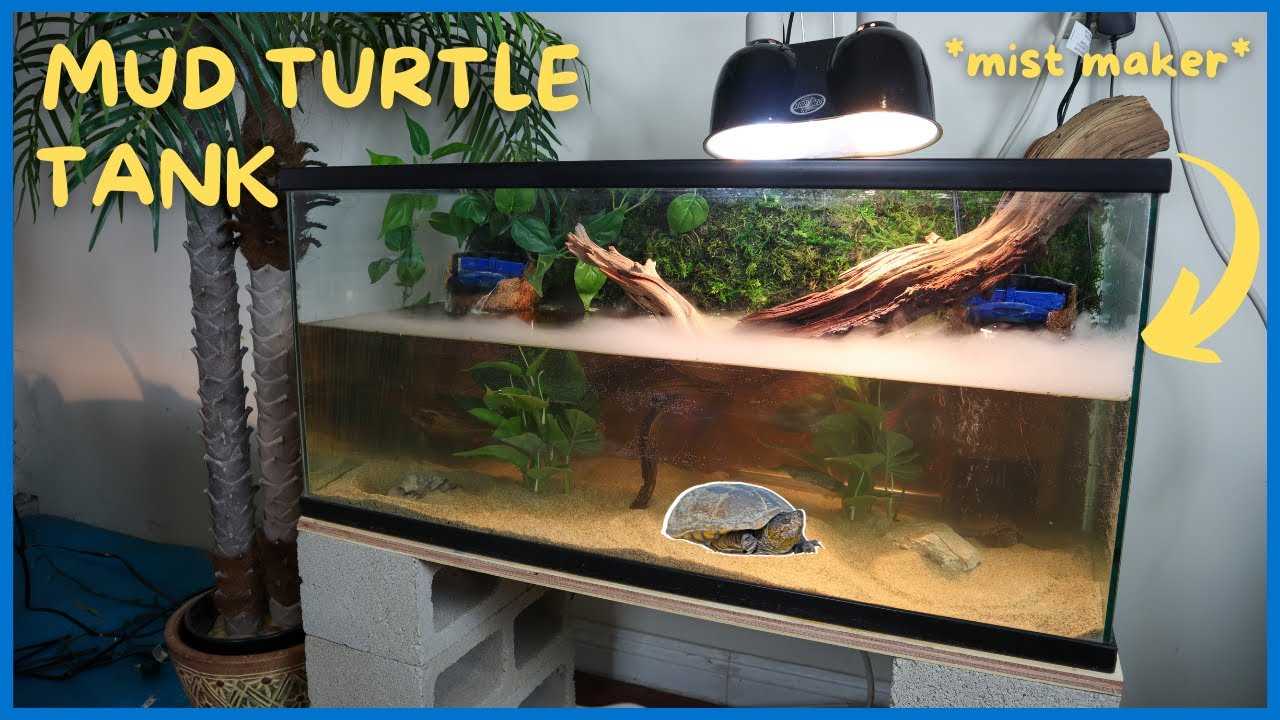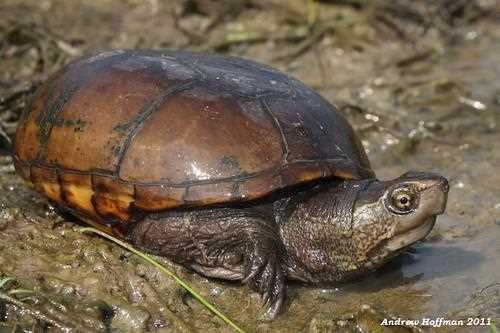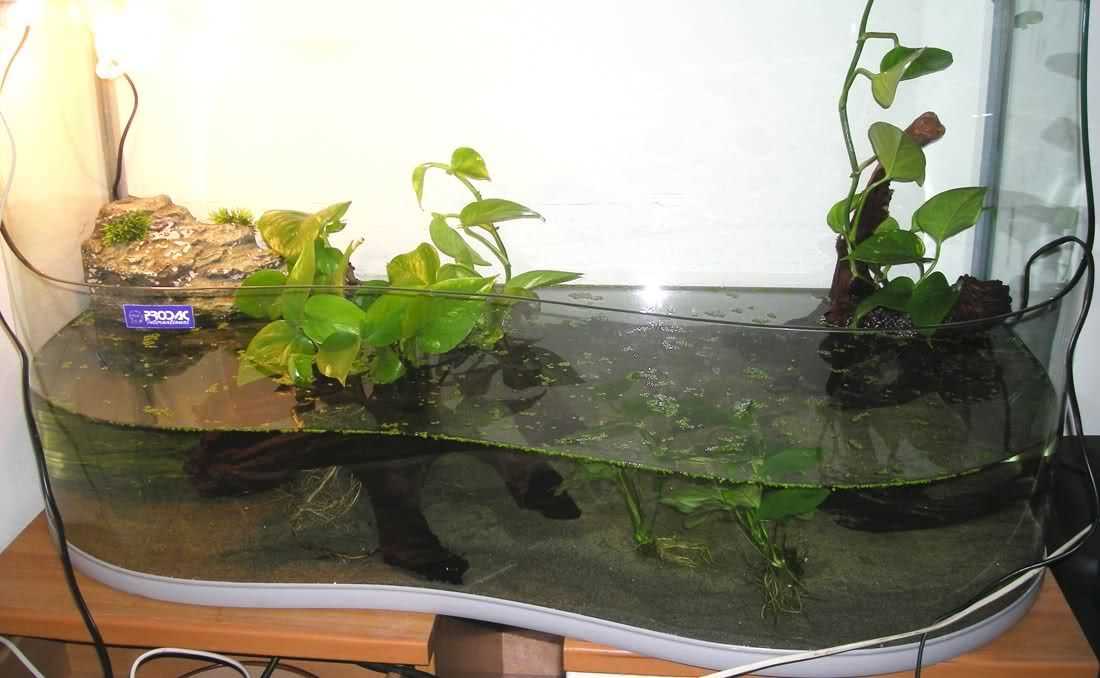One of the first things you need to consider when setting up a mud turtle tank is the substrate. Mud turtles are semi-aquatic creatures, so it’s essential to choose a substrate that can mimic their natural habitat. The ideal substrate for a mud turtle tank is a combination of water and land, allowing them to burrow and swim. A mix of sand and soil works well, creating a soft surface for the turtles to dig and explore.
Another crucial element of creating the perfect mud turtle tank setup is the filtration system. Mud turtles produce waste, and it’s necessary to have a reliable filter to keep the water clean and free from harmful bacteria. Investing in a high-quality canister filter or a submersible filter will ensure that the water quality in the tank remains optimal for the turtles’ health.
Proper lighting is also vital for a mud turtle tank setup. Turtles need access to UVB lighting to support their overall health, as it helps them synthesize vitamin D3 and absorb calcium. Using a UVB bulb specifically designed for reptiles is crucial to ensure your mud turtle gets the right amount of UVB radiation. Additionally, providing a heat lamp will create a warm basking spot where the turtle can regulate its body temperature.
Lastly, maintaining the right water conditions is essential for your mud turtle’s well-being. Mud turtles require clean, dechlorinated water that is kept at an appropriate temperature. Using a water heater and a thermometer will help you monitor and regulate the water temperature. Additionally, adding aquatic plants and rocks to the tank will create a natural environment, providing hiding spots and surfaces for the turtles to climb on.
By following these guidelines for a mud turtle tank setup, you’ll be well on your way to creating a comfortable and stimulating habitat for your new pet. Remember to regularly clean the tank, check the water parameters, and provide a varied and balanced diet for your mud turtle. With proper care and attention to detail, your mud turtle will thrive and bring joy to your reptile-keeping experience.
Choosing a Suitable Tank
When setting up a mud turtle habitat, one of the most important factors to consider is choosing a suitable tank. The tank should provide enough space for the turtle to move around comfortably and engage in natural behaviors. Ideally, the tank should be at least 40 gallons in size for a single mud turtle, with an additional 10 gallons of space for each additional turtle.
Additionally, the tank should be equipped with a suitable filter to maintain water quality. The filter should be powerful enough to remove waste and toxins, but gentle enough to not create a strong current for the turtle. A combination of a mechanical filter and a biological filter is recommended to ensure optimal water conditions for the turtle.
Lighting is another important aspect to consider when choosing a tank for a mud turtle. UVB lighting is essential for the turtle’s health, as it helps them synthesize vitamin D3 and maintain proper shell growth. A UVB bulb should be placed in a fixture that spans the length of the tank, providing adequate exposure for the turtle.
Setting up the Tank Bedding for Your Mud Turtle

Choosing the Right Substrate
When selecting a substrate for your mud turtle tank, it is essential to choose a material that is both safe and suitable for your turtle. The substrate should mimic the natural environment of mud turtles, allowing them to exhibit their natural behaviors.
A common and suitable substrate option for mud turtles is a combination of aquarium gravel and river sand. The gravel provides a solid base, while the sand allows the turtle to rest and dig comfortably. Avoid using materials such as small rocks or pebbles that your turtle could potentially ingest.
Setting Up the Substrate
Before adding the substrate to the tank, make sure to clean it thoroughly to remove any dust or debris. Rinse the gravel and sand until the water runs clear to ensure that no harmful substances are present.
Once the substrate is clean, evenly spread a layer of aquarium gravel at the bottom of the tank. Aim for a thickness of around 1-2 inches to provide a stable base for your turtle. Then, add a layer of river sand on top, ensuring it is at least 2 inches deep to allow for digging and burrowing.
Considering Filtration
Ensure that the substrate does not interfere with the functioning of the filter. Avoid clogging the filter with excessive debris by using a mesh screen or sponge. This will prevent the filter from becoming overwhelmed and maintain a clean and healthy habitat for your mud turtle.
Providing Adequate Heat and Lighting
Heating

Lighting
Along with heating, providing the right lighting conditions is also important for mud turtles. These turtles require both UVB and UVA light to thrive. UVB light is necessary for the synthesis of vitamin D3, which helps them absorb calcium and maintain healthy shell and bone growth. UVA light, on the other hand, helps simulate the natural sunlight and promotes natural behaviors.
To provide the necessary lighting, you can use a UVB fluorescent bulb along with a basking light. The UVB bulb should be placed within 12 inches of the basking area, and it should be replaced every 6-12 months, as its effectiveness diminishes over time. The basking light should provide a warm temperature of around 90°F (32°C) to create a comfortable basking spot for your mud turtle.
Filtration
In addition to heat and lighting, filtration is crucial to maintain clean and healthy water for your mud turtle. A good filtration system will help remove waste, excess food, and other impurities from the water, preventing the growth of harmful bacteria and maintaining optimal water quality.
By setting up proper heat and lighting systems, as well as a reliable filtration system, you can create a comfortable and healthy habitat for your mud turtle. This will help ensure that your pet thrives and lives a long and happy life.
Creating the Right Water Conditions for Your Mud Turtle Tank
One of the most crucial aspects of setting up a mud turtle tank is creating the right water conditions for your turtle’s habitat. Mud turtles are semi-aquatic creatures, so having the right water environment is essential for their overall health and well-being.
Choosing the Right Water Setup
Next, you’ll need to consider the depth of the water. Mud turtles are relatively small, so a water depth of around 6-8 inches should be sufficient for most species. However, it’s always a good idea to research the specific requirements of your particular turtle species to ensure you’re providing the ideal water depth.
Water Temperature and Lighting
Maintaining the right water temperature is crucial for your mud turtle’s health. Most mud turtle species require a water temperature between 75-80 degrees Fahrenheit (24-27 degrees Celsius). You can achieve the proper temperature by using a submersible aquarium heater.
In addition to temperature, lighting is also important for your mud turtle tank setup. Providing a UVB light source is essential for your turtle’s overall well-being, as it helps them metabolize calcium and prevent shell deformities. You can set up a UVB light fixture above the tank to ensure your turtle receives adequate exposure to this essential spectrum of light.
Choosing the Right Substrate
Filtration and Water Quality
Proper filtration is crucial for maintaining water quality in your mud turtle tank. A good quality aquarium filter will help remove harmful substances such as ammonia and nitrites, keeping the water clean and safe for your turtle. Make sure to choose a filter that is appropriately sized for the tank and follow the manufacturer’s instructions for installation and maintenance.
Regular water changes are also essential for maintaining water quality. Aim to replace 20-25% of the tank water every 2-3 weeks to keep ammonia and nitrate levels in check.
Maintaining a Healthy Habitat
Conclusion:
Adding Live Plants for a Natural Environment
In the mud turtle tank setup, it is essential to create a habitat that mimics the natural environment of the turtle as closely as possible. One way to achieve this is by adding live plants to the tank.
The substrate you choose for the tank should be suitable for both the plants and the turtle. Opt for a fine-grained substrate that will not harm the turtle’s delicate skin. It should also be able to retain moisture, as some plants require high humidity levels.
Live plants offer several benefits for your mud turtle. Firstly, they provide hiding spots and cover, which helps reduce stress and make the turtle feel secure. Secondly, they help to maintain water quality by absorbing nitrates and other harmful substances. Additionally, they enhance the overall aesthetics of the tank, creating a natural and visually appealing environment.
When introducing live plants to the tank, make sure to properly clean them to prevent the introduction of diseases or pests. Rinse the plants under running water and inspect them closely for any signs of damage or infestation. It is also recommended to quarantine new plants for a few days before adding them to the main tank.
To ensure the plants thrive in the turtle tank, provide them with adequate lighting. Use a combination of natural light and artificial lighting, such as full-spectrum LED lights, to meet their light requirements. Monitor the plants closely to ensure they are receiving the right amount of light and adjust the lighting accordingly.
Regular maintenance is crucial for the health of the live plants in the mud turtle tank. Trim any dead or decaying leaves to prevent them from polluting the water. Also, remove any excess algae that may grow on the plants or tank surfaces, as it can inhibit the plants’ growth.
Adding Live Plants for a Natural Environment
There are several factors to consider when selecting live plants for your mud turtle tank setup. First, choose plants that are suitable for an aquatic and semi-aquatic habitat. Some common options include water lettuce, water hyacinth, Java fern, and anacharis. These plants can survive well in water and provide hiding places for your turtle.
Before adding live plants to your turtle tank, make sure to properly prepare them. Rinse the plants thoroughly to remove any dirt or pesticides that may harm your turtle. Trim any excess leaves or roots to prevent overgrowth in the tank.
Placement of live plants is also important. Arrange the plants in a way that provides cover and a sense of security for your turtle. You can use rocks or driftwood to anchor the plants and create a more natural and visually appealing habitat.
In addition to their aesthetic value, live plants also contribute to the water filtration system in your mud turtle tank. They help absorb excess nutrients from the water, reducing the risk of water pollution. The plants also provide oxygen through photosynthesis, creating a healthier environment for your turtle.
Mud Turtle Tank Setup: Maintaining Water Quality and Filtration
Proper setup and maintenance of the filtration system in your mud turtle tank is crucial for the health and well-being of your pet. A high-quality filtration system helps to remove toxins from the water, maintain water clarity, and provide a clean and healthy habitat for your turtle.
In addition to a filtration system, regular water changes are also essential for maintaining water quality in your mud turtle tank. Partial water changes should be performed on a regular basis to remove accumulated waste products and replenish the water with fresh, clean water. The frequency and amount of water changes will depend on the size of your tank and the number of turtles you have.
Monitoring water parameters, such as temperature, pH, and ammonia levels, is crucial for ensuring a healthy habitat for your mud turtle. Test kits are available at pet stores and can be used to regularly monitor these parameters. If any water parameters are outside of the appropriate range, corrective actions should be taken to address the issue.
Feeding and Caring for Your Mud Turtle
1. Feeding Schedule and Diet
It is crucial to establish a regular feeding schedule for your mud turtle. These turtles are omnivorous and have a varied diet consisting of both animal protein and vegetation. Offer a combination of commercial turtle pellets, earthworms, mealworms, and fish for the animal protein part of their diet. For vegetation, include dark leafy greens, vegetables, and fruits.
2. Calcium and Vitamin Supplements
Mud turtles require calcium and vitamin supplements to support their overall health. Dust their food with a reptile calcium supplement at least once a week. Additionally, provide a vitamin supplement, specifically formulated for turtles, to ensure they receive all the necessary vitamins and minerals.
3. Proper Water Conditions
Water plays a crucial role in the care and feeding of mud turtles. Provide a large enough tank with clean, chlorine-free water that allows the turtle to fully submerge. The water temperature should be maintained between 70-80°F (21-27°C).
A shallow dish can be provided as a feeding area to make it easier for the turtle to access its food. Be sure to remove any uneaten food after each feeding to maintain water cleanliness.
4. Lighting and Heating

Mud turtles require both UVB and UVA light for proper digestion, calcium metabolism, and overall well-being. Provide a full-spectrum UVB light for 10-12 hours a day to ensure your turtle receives enough UV radiation.
The basking area should be heated to a temperature of around 85°F (29°C), while the rest of the tank should be slightly cooler. Use a basking light or heat lamp to provide the necessary heat gradient.
5. Tank Maintenance
Regular tank maintenance is vital to ensure the health of your mud turtle. Clean the tank and replace the water at least once a week to prevent the buildup of bacteria and ammonia. Remove any uneaten food, feces, and debris from the tank to maintain water quality.
Monitor the water parameters regularly using a test kit to ensure the proper pH and ammonia levels are maintained. Consider using a filter to help maintain the water quality. Additionally, check the temperature and humidity levels in the tank to ensure they are within the appropriate range.
By following these feeding and care guidelines, you can provide a healthy and thriving habitat for your mud turtle. Remember to observe your turtle closely and consult a reptile veterinarian if you notice any signs of illness or abnormalities.

I’m Lena Adams—a product of an unconventional upbringing in the African wilderness. My father, a daring explorer of African wildlife, sparked my fascination with reptiles, a passion that intertwined with the tragic loss of my mother during an expedition, leaving an indelible mark on my life. Driven to understand the creatures that captivated my parents, I embarked on my journey, sharing insights about reptiles, frogs, and lizards on my website. Through my explorations and conservation efforts, I honour my family’s legacy while seeking connections—to the creatures, nature, and the mother whose presence I yearn to understand.
